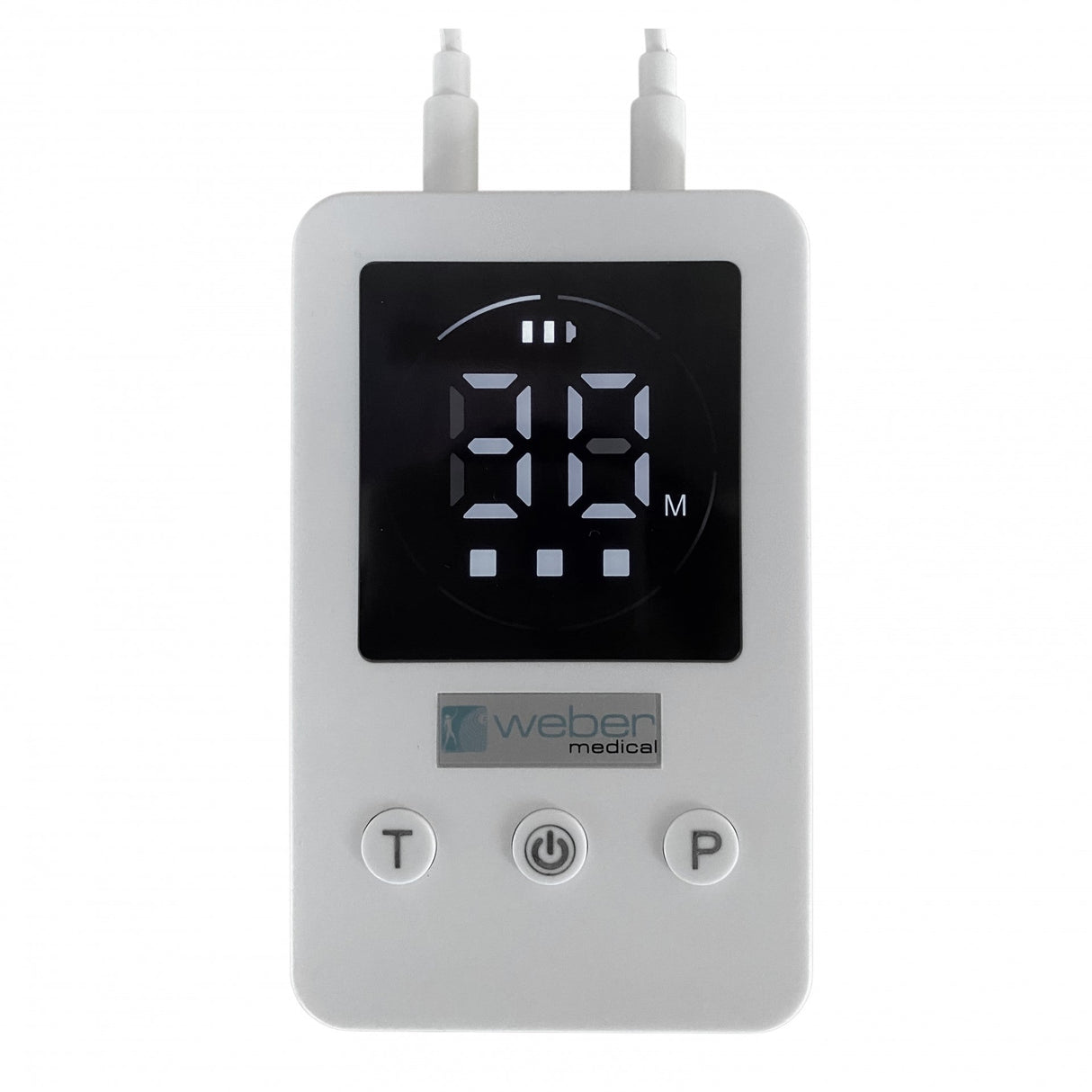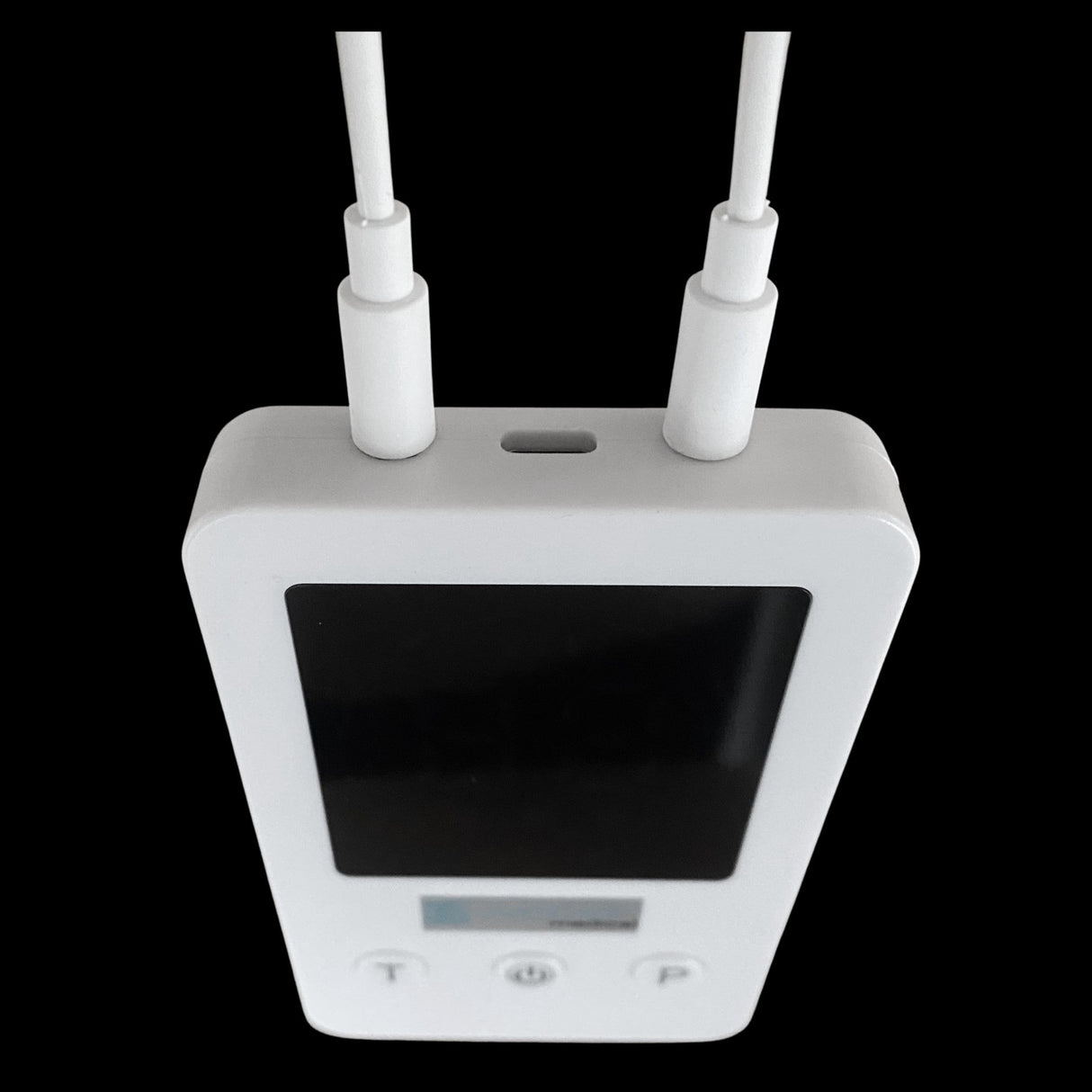Weber PBM Local Applicators
Weber PBM Local Applicators Black is backordered and will ship as soon as it is back in stock.
Attachment
Weber PBM Local Applicators (nasal, ear and pad)
Can be used independently, without a Laser Watch
New: Controller with two ports
Previously, the pad, nose, ear and mouth/throat probes could only be used by connecting them to the Laser Watch. From now on, a separate controller can operate up to two applicators simultaneously.
Easy handling
Select duration and intensity at the press of a button.
Research link, click here to read
How can Red Light therapy possibly relieve Tinnitus?
RLT light targeted inside the ear canal will stimulate cellular mitochondria and increases blood supply to cochlear hair cells (cilia). In this way, RLT is believed to assist in regulating electrical signals compromised by diseased and degenerated cochlear hair cells.
Research Studies
The first study is about the Low-level laser effect in the treatment of patients with intractable Tinnitus due to sensorineural hearing loss as cited in the National Center for Biotechnology Information.
Researchers studied LLLT on 120 patients with untreatable tinnitus and hearing damage in a 2014 trial. The patients were split into two sections. Group one underwent laser therapy treatment over 20-sessions for 20-minutes. In the end, the authors concluded that “low-level laser radiation is effective for the short-term treatment of tinnitus caused by sensorineural hearing loss, and its impact may be reduced over the time.
The second study confirms the effectiveness of low-level laser stimulation in tinnitus treatment.
Forty-six participants who suffered from tinnitus for a minimum of three years were randomly assigned to two groups. Twenty patients (N=20) to a placebo group. Twenty-six patients (N=26) to the experimental group received low-level laser stimulation with of wavelength of 650 nm.
The experimental group received the laser treatment 20 minutes per day for a period extending three months. A test-retest was done to measure the results. The Tinnitus Handicap Inventory (THI) questionnaire was completed by the participants at the start and end of the test. By the end, Cuda and De Caria found that while all the participants’ THI scores improved, the experimental group score significantly better.
Approximately 61% of the experimental group who received the laser treatment had significantly improved.
According to Mic Waiver from the 49th DCM Congress in Rotenberg in Bavaria that in their study, sixty-one patients were included, and it is proven that low-level laser light improved the Tinnitus and is highly effective.
Conclusion
Several studies indicate that RLT may be an effective treatment for Tinnitus.
PBMT for neurological diseases
The application of photobiomodulation therapy (PBMT) for neuronal stimulation is studied in different animal models and in humans, and has shown to improve cerebral metabolic activity and blood flow, and provide neuroprotection via anti-inflammatory and antioxidant pathways. Recently, intranasal PBMT (i-PBMT) has become an attractive and potential method for the treatment of brain conditions. Herein, we provide a summary of different intranasal light delivery approaches including a nostril-based portable method and implanted deep-nasal methods for the effective systemic or direct irradiation of the brain. Nostril-based i-PBMT devices are available, using either lasers or light emitting diodes (LEDs), and can be applied either alone or in combination to transcranial devices (the latter applied directly to the scalp) to treat a wide range of brain conditions such as mild cognitive impairment, Alzheimer’s disease, Parkinson’s disease, cerebrovascular diseases, depression and anxiety as well as insomnia. Evidence shows that nostril-based i-PBMT improves blood rheology and cerebral blood flow, so that, without needing to puncture blood vessels, i-PBMT may have equivalent results to a peripheral intravenous laser irradiation procedure. Up to now, no studies were conducted to implant PBMT light sources deep within the nose in a clinical setting, but simulation studies suggest that deep-nasal PBMT via cribriform plate and sphenoid sinus might be an effective method to deliver light to the ventromedial part of the prefrontal and orbitofrontal cortex. Home-based i-PBMT, using inexpensive LED applicators, has potential as a novel approach for neurorehabilitation; comparative studies also testing sham, and transcranial PBMT are warranted.
The application of photobiomodulation therapy (PBMT) for neuronal stimulation is studied in different animal models and in humans, and has shown to improve cerebral metabolic activity and blood flow, and provide neuroprotection via anti-inflammatory and antioxidant pathways. Recently, intranasal PBMT (i-PBMT) has become an attractive and potential method for the treatment of brain conditions. Herein, we provide a summary of different intranasal light delivery approaches including a nostril-based portable method and implanted deep-nasal methods for the effective systemic or direct irradiation of the brain. Nostril-based i-PBMT devices are available, using either lasers or light emitting diodes (LEDs), and can be applied either alone or in combination to transcranial devices (the latter applied directly to the scalp) to treat a wide range of brain conditions such as mild cognitive impairment, Alzheimer's disease, Parkinson's disease, cerebrovascular diseases, depression and anxiety as well as insomnia. Evidence shows that nostril-based i-PBMT improves blood rheology and cerebral blood flow, so that, without needing to puncture blood vessels, i-PBMT may have equivalent results to a peripheral intravenous laser irradiation procedure
Technical properties
Duration: 5 -10 - 15 - 20 - 25 - 30 - 35 - 40 - 45 - 50 - 55 - 60 minutes
Intensity: 3 levels
Nasal probe
Diode type: Laser
Wavelength: 2x 650 nm (Red)
Max. total power output: 135 mW
Ear probe
Diode type: Laser
Wavelength: 2x 650 nm (Red)
Max. total power output: 120 mW
Pad
Diode type: Laser (Red) and LED (Green, Blue and Yellow)
Wavelengths:
3x 650 nm (Red)
3x 532 nm (Green)
3x 450 nm (Blue)
3x 589 nm (Yellow)
Max. total power output: 1,4 W
With each ear probe and nasal probe you receive a bag with 10 transparent silicone protections caps (5 pairs).
A charging cable for the controller is included in delivery.














